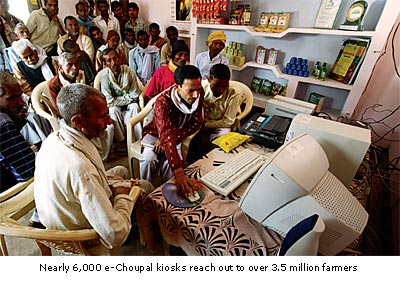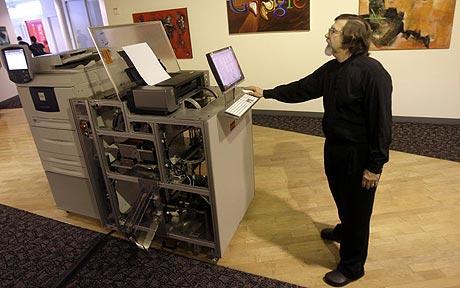Have you heard about e-Choupal? Another example of the Fourth Revolution in action.
ITC, an Indian agricultural and food company, is revolutionizing rural India. By providing villages with access to a computer and internet, they give to the farmers unprecedented access to all sorts of useful information about weather, the market price of crops, best agricultural practices. By removing the traditional intermediaries they allow farmers to sell their crops a better price. They change considerably the social structure of rural India.

At the same time they create tremendous value for the farmers, ITC creates value for itself by selling its agricultural equipment, fertilizers and seeds, and getting much better quality products that it can use to manufacture world-standard food.
It also creates employment opportunity for the e-choupal village representative who handles the computer.
Summary: providing access to long distance interactive communication in rural india, a company changes the life of farmers, raises their revenue and at the same time creates significant value for itself.
The Fourth Revolution is indeed a Revolution. When do you start co-creating a joint future with your suppliers and customers, to unleash the value of the Collaborative Age for the benefit of all?
For more information on e-Choupal, ITC provides some nice high level explanations here and here. A long paper from the World Resource Institute explains the e-choupal system and its profitability.




